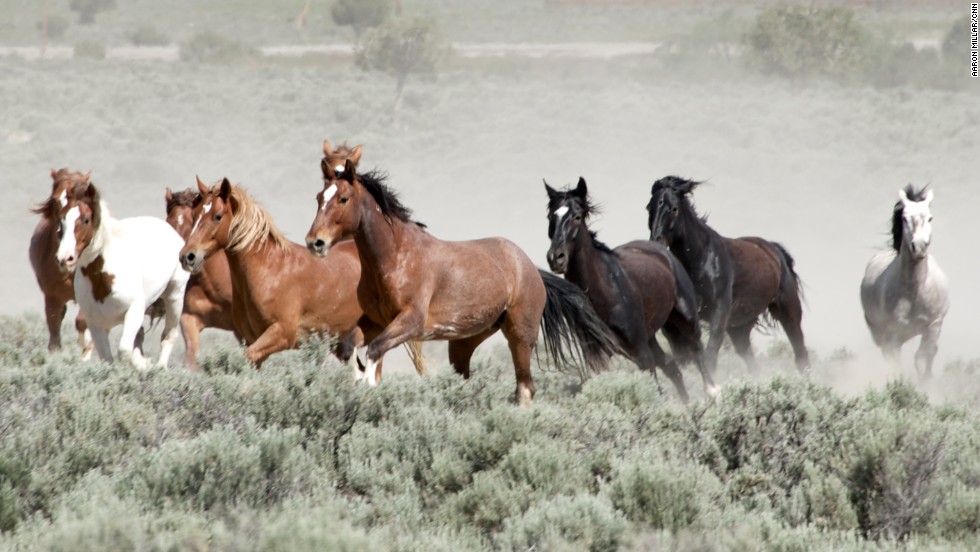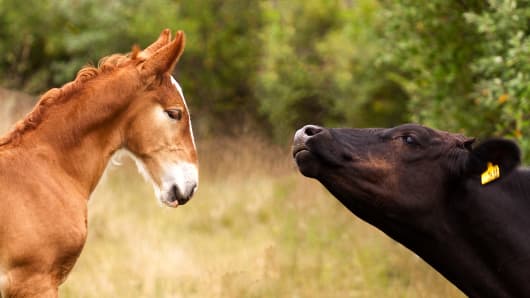Mustangs and the idea of spirit go hand in hand. Spirit of freedom, of bravery, of survival, all ideals
that American hold dear. What horse more embodies spirit of America, than one that has escaped and returned to the wild? What horse can more properly exemplifies how America sees its self as a melting pot? Mustangs are not a breed, but the result of several breeds escaping or released back into the wild.
Just like most Americans, Mustangs are not indigenous to the United states, although North America is the birth place of horse, it is believed that they went extinct. Did they ever really leave? How did they get reintroduced? Nobody is quite sure. Native Americans claim that they had horses before the Spanish came and before the Spanish, Vikings visited America. Could they have dropped of some Fjords at that time?
They most common story is that as Spanish Conquistadors moved across the land, some of their horses escaped or were released. No one breed was used by the conquistadors, and the original breeds are extinct but their genetics lives on in the Mustangs. Over the years more people from different countries moved in and brought their horses with them. Horses of all colors and types. Some were released in the the wild, and others escaped.
Ranchers might release a stallion they liked into the wild herds and come back later and gather up some of the prodigy that they liked.
In fact, the Mustangs have been treated as a free source of horses for many pioneers and even the US Government. Mustangers were cowboys that would round up the Mustangs for their personal use, or to train and sell. Mounts for the cavalry were gathered up from the Mustangs. When the Government was does with them, they released them back into the wild.
As we moved from using horses to do work, to using machines, Mustangs started to be seen as a threat to to the ranchers. Ranchers wanted to use the government land for grazing their cattle and sheep. Mustangs were eating the grass that the cattlemen wanted. Conflict over a species with no economic value against a species with great economic value has been going on for a long time.
No history of the Mustang is complete without the mention of Wild Horse Annie. She lobbied for the protection of the Mustangs in the 1960's. Finally, in 1971 the Wild Horse Protection Act was passed. Before this act the wild horses were rounded up and sent off to slaughter. After this act the Bureau of Land Management (BLM) was tasked with managing the lands to protect the spirit of the west and allowing cattlemen to graze their cattle. Conflicts still occur today, but at least the horses are protected.
Part of the management plan includes managing the numbers of wild horses on the lands. This is done in part with Mustang round ups. Using helicopters, Mustangs are rounded up and kept in holding pens until they can be adopted out. Mustang Adoption by the BLM allows anyone to adopt a wild horses and burros. To own a part of an American Symbol of the West. Often times these horses are not even halter broke and require special fencing. Unfortunately it is getting harder to adopt out these horses and burros. So they often sit in holding pens for years.
In a way, the Mustang is again a symbol of the people of America. Once living the American dream, but not being pushed out of their home by those just trying to make a profit.




No comments:
Post a Comment